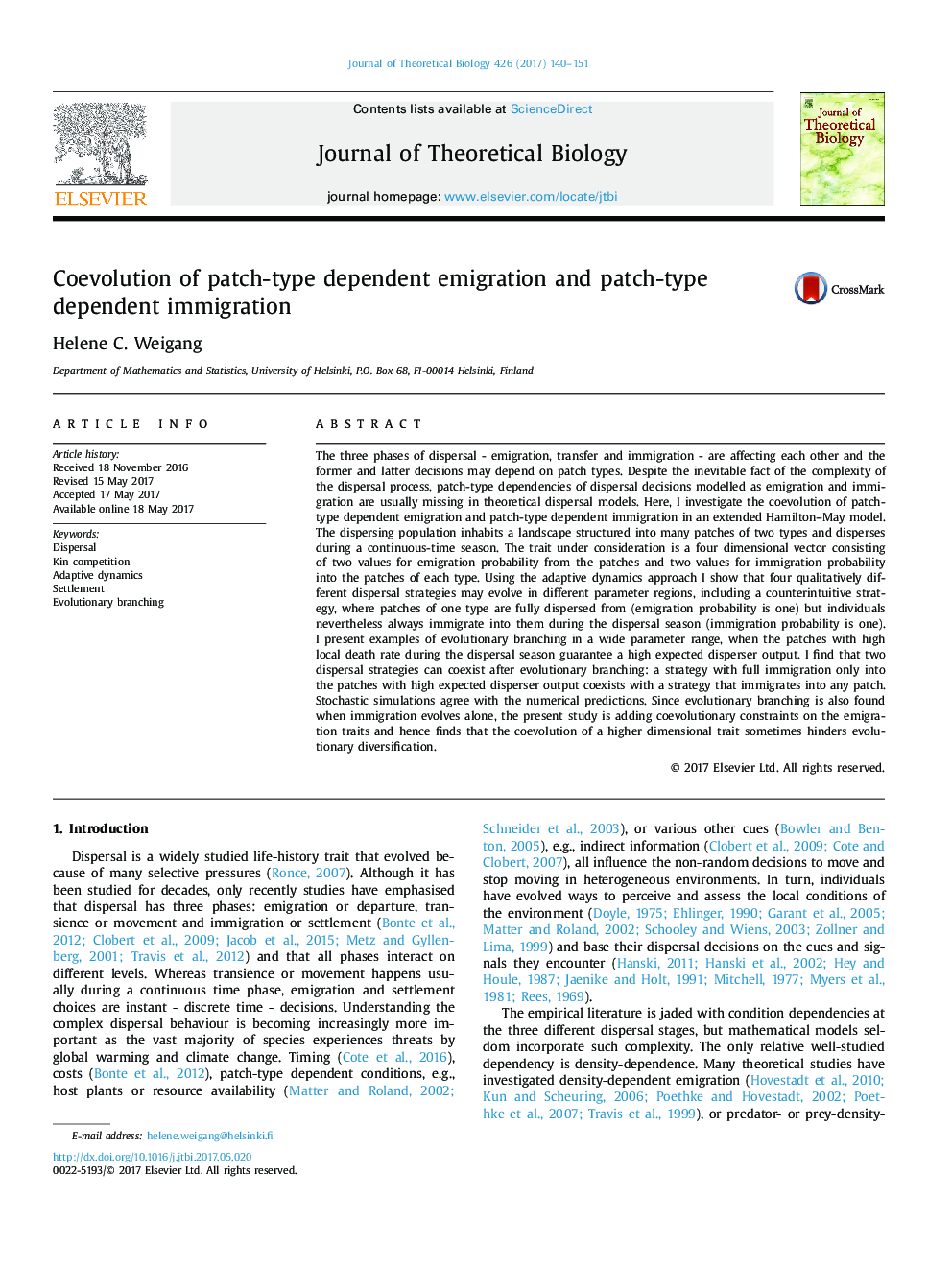| Article ID | Journal | Published Year | Pages | File Type |
|---|---|---|---|---|
| 5759953 | Journal of Theoretical Biology | 2017 | 12 Pages |
Abstract
The three phases of dispersal - emigration, transfer and immigration - are affecting each other and the former and latter decisions may depend on patch types. Despite the inevitable fact of the complexity of the dispersal process, patch-type dependencies of dispersal decisions modelled as emigration and immigration are usually missing in theoretical dispersal models. Here, I investigate the coevolution of patch-type dependent emigration and patch-type dependent immigration in an extended Hamilton-May model. The dispersing population inhabits a landscape structured into many patches of two types and disperses during a continuous-time season. The trait under consideration is a four dimensional vector consisting of two values for emigration probability from the patches and two values for immigration probability into the patches of each type. Using the adaptive dynamics approach I show that four qualitatively different dispersal strategies may evolve in different parameter regions, including a counterintuitive strategy, where patches of one type are fully dispersed from (emigration probability is one) but individuals nevertheless always immigrate into them during the dispersal season (immigration probability is one). I present examples of evolutionary branching in a wide parameter range, when the patches with high local death rate during the dispersal season guarantee a high expected disperser output. I find that two dispersal strategies can coexist after evolutionary branching: a strategy with full immigration only into the patches with high expected disperser output coexists with a strategy that immigrates into any patch. Stochastic simulations agree with the numerical predictions. Since evolutionary branching is also found when immigration evolves alone, the present study is adding coevolutionary constraints on the emigration traits and hence finds that the coevolution of a higher dimensional trait sometimes hinders evolutionary diversification.
Related Topics
Life Sciences
Agricultural and Biological Sciences
Agricultural and Biological Sciences (General)
Authors
Helene C. Weigang,
